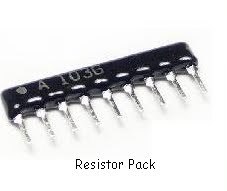As promised I have finally completed the second PEX tutorial.
And subsequently, as promised, this is the thread for discussing the state of the PEX tutorials.
I think it’s necissarily to clarify a few matters before creating any more PEX tutorials (or at least before I go making any more).
Are any of the existing PEX tutorials ‘official’ or are they all just user-contributed tutorials where the contents are up to the discretion of their creators?
I’ve never been entirely certain of this, but erred towards trying to make them somewhat official.
How steep should the learning curve be?
When writing my tutorials I was intentionally aiming mine at people with no prior experience and keeping the learning curve low rather than diving into some of the theory early on in a deliberate attempt to keep the tutorials ‘fun’ and ‘easy’ for beginners.
Evidently not everyone agreed with this approach and we ended up with ‘resitor-gate’, so it would be good to be on the same page with this.
If these tutorials are ‘official’, should we have one person in charge, or should we get different people doing different sections of the series?
Might be a bit awkward if the tone ends up shifting dramatically, but the final result might be a bit more democratic. Plus many hands make light work.
One approach might be to decide what each tutorial is going to be before hand and then have people volunteer to cover a particular topic.
If these tutorials are ‘official’, should someone else be in charge?
I’ll be the first to admit my knowledge of circuits is severly lacking and due to my other commitments one of my tutorials went unfinished for 2-3 months and I can’t guarantee I won’t get sidetracked with other projects again, so perhaps I’m not the best person to be doing the PEX tutorials?
Or perhaps I ought to just do the early tutorials and then hand over the reins to someone who’s more experienced and has more time?
If these tutorials are not ‘official’, should we simply agree to let people manage their own tutorials?
Might be a nice solution to avoid conflict, and a redundancy of tutorials might be benefiical in the long run. Some people get on better with tutorials of a different tone (some like nice gentle/easy ones, some love something that gets straight to the complexities).
Although I haven’t got a full scale plan drawn up, I did have an idea in my head about the general order of topics I was hoping to cover.
I fully admit that until now I haven’t actually discussed this so it might have appeared that I had absolutely no clue what I was doing.
I did have a general plan scribbled on some paper, but I never got round to discussing it until now for the same reasons that I didn’t get round to finishing the part 2 of the tutorial until now.
The general idea was to cover digital output and input (using LEDs and buttons),
then cover analogue input and output (most likely using a potentiometer and a motor or a colour-shifting LED),
then do a few articles about theory (resistor colours, pull-down vs pull-up resistors, general electricity stuff, electrical diagrams)
then move onto something of medium difficulty (maybe using the Pokitto screen as a rudimentary oscilloscope to display sound input or using the Pokitto screen to draw a thermometer corresponding to a thermal input),
and finish up with covering a few communication protocols and similarly advanced techniques (I2C, SPI, BLE).
So the whole thing would have looked something like:
Easy:
- LED+DigitalOut
- Button+DigitalIn
- Potentiometer+AnalogueIn
- Motor/LED+AnalogueOut
Theory:
- Resitors (colour, maybe make a resitor/button ladder)
- Reistors pt2 (pull-up/pull-down, configure the button example to not need a resitor)
- Circuit diagrams (common circuit symbols)
- Serial vs Parallel circuits
- Electricity theory (reistance, amps, ohms, all the boring sciency stuff)
Medium:
- Pokitto thermometer
- Pokitto oscilloscope-like thing/decibelometer
Hard:
- I2C communication (maybe using @spinal’s nunchuck thing as an example, or something I2C based that’s especially cheap )
- SPI communication (no idea, possibly a screen if there’s one cheap enough, or something cheaper if anyone can think of something)
- BLE communication (this would be a lot easer with BLE hats)

